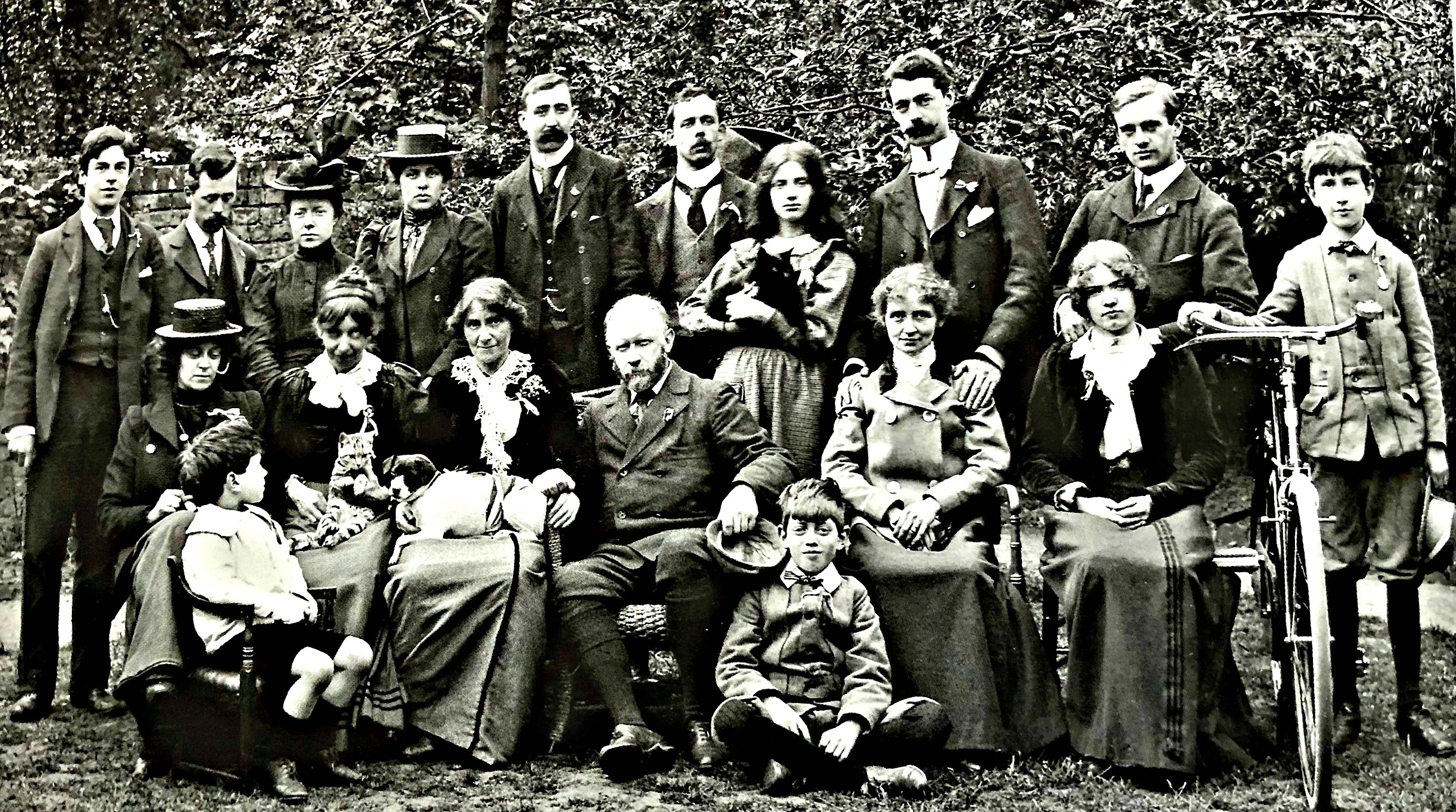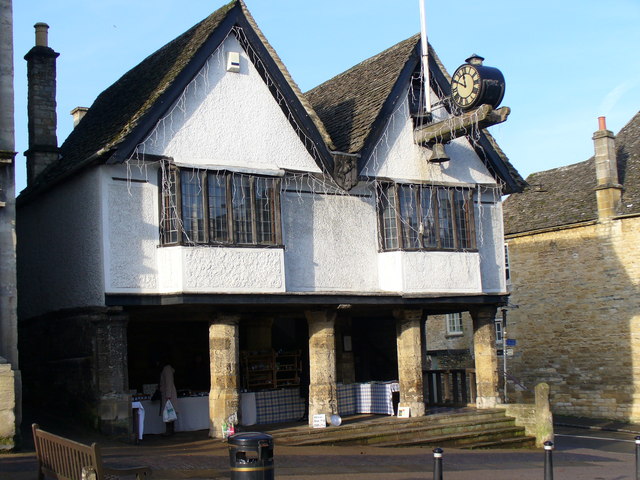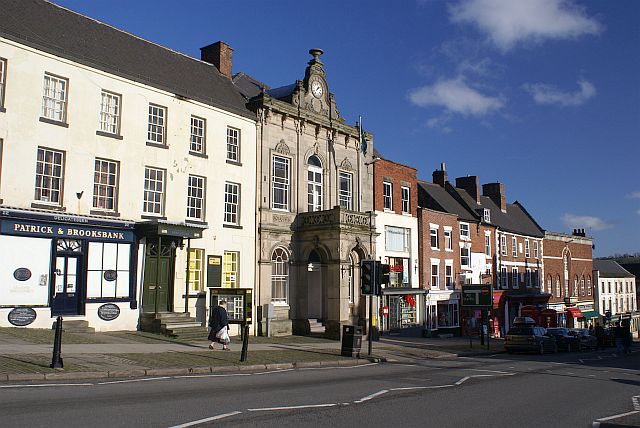|
Karl Parsons
Karl Bergemann Parsons (23 January 1884 – 30 September 1934) was a British stained glass artist associated with the Arts and Crafts movement. Early life, 1884 – 1898 Parsons was born in Peckham in south London on 23 January 1884, the 12th and youngest child of Arthur William Parsons (1838–1901), a foreign language translator, and Emma Matilda Parsons, née Bergemann (1837–1914). He was christened with the names Charles Bergemann, though the family always called him Karl, the name he was to use in later life. From 1893 to 1898 he attended Haberdashers' Aske's Hatcham College, Haberdashers' Aske's Hatcham Boys School at New Cross in south London. Introduction to Whall, 1898 – outbreak of war One of Parsons’ older sisters was the artist Beatrice Emma Parsons (1869–1955). Beatrice worked for a while in Christopher Whall’s studio and when Parsons left school, Beatrice persuaded Whall to take him on as an apprentice. Whall it seems saw promise in Parsons' Sketch (d ... [...More Info...] [...Related Items...] OR: [Wikipedia] [Google] [Baidu] |
United Kingdom
The United Kingdom of Great Britain and Northern Ireland, commonly known as the United Kingdom (UK) or Britain, is a country in Europe, off the north-western coast of the European mainland, continental mainland. It comprises England, Scotland, Wales and Northern Ireland. The United Kingdom includes the island of Great Britain, the north-eastern part of the island of Ireland, and many List of islands of the United Kingdom, smaller islands within the British Isles. Northern Ireland shares Republic of Ireland–United Kingdom border, a land border with the Republic of Ireland; otherwise, the United Kingdom is surrounded by the Atlantic Ocean, the North Sea, the English Channel, the Celtic Sea and the Irish Sea. The total area of the United Kingdom is , with an estimated 2020 population of more than 67 million people. The United Kingdom has evolved from a series of annexations, unions and separations of constituent countries over several hundred years. The Treaty of Union between ... [...More Info...] [...Related Items...] OR: [Wikipedia] [Google] [Baidu] |
John Fulleylove
John Fulleylove (18 Aug 1845 – 22 May 1908) was an English landscape artist and illustrator. Life Born in Leicester, he originally trained as an architect with local firm "Shenton and Baker", before becoming an artist in watercolours and oils. He exhibited widely in England from 1871 at venues in London such as the Royal Academy, Royal Society of British Artists, Fine Art Society, Royal Institute of Painters in Water Colours, Royal Institute of Oil Painters, and in many other regional towns and cities. He became a member of the RI in 1879 and the ROI in 1883. Abroad, he painted in France, Italy, Greece and the Middle East. His watercolour illustrations appeared in several travel books, such as those by A & C Black (see below). Fulleylove died on 22 May 1908 at his Hampstead home and was buried on the eastern side of Highgate Cemetery. Family In 1878, Fulleylove married fellow artist Elizabeth Elgood.Elizabeth Elgood came from a family of artists. She had seven brot ... [...More Info...] [...Related Items...] OR: [Wikipedia] [Google] [Baidu] |
Apse
In architecture, an apse (plural apses; from Latin 'arch, vault' from Ancient Greek 'arch'; sometimes written apsis, plural apsides) is a semicircular recess covered with a hemispherical vault or semi-dome, also known as an '' exedra''. In Byzantine, Romanesque, and Gothic Christian church (including cathedral and abbey) architecture, the term is applied to a semi-circular or polygonal termination of the main building at the liturgical east end (where the altar is), regardless of the shape of the roof, which may be flat, sloping, domed, or hemispherical. Smaller apses are found elsewhere, especially in shrines. Definition An apse is a semicircular recess, often covered with a hemispherical vault. Commonly, the apse of a church, cathedral or basilica is the semicircular or polygonal termination to the choir or sanctuary, or sometimes at the end of an aisle. Smaller apses are sometimes built in other parts of the church, especially for reliquaries or shrines of saints ... [...More Info...] [...Related Items...] OR: [Wikipedia] [Google] [Baidu] |
Embroidery
Embroidery is the craft of decorating fabric or other materials using a needle to apply thread or yarn. Embroidery may also incorporate other materials such as pearls, beads, quills, and sequins. In modern days, embroidery is usually seen on caps, hats, coats, overlays, blankets, dress shirts, denim, dresses, stockings, scarfs, and golf shirts. Embroidery is available in a wide variety of thread or yarn colour. Some of the basic techniques or stitches of the earliest embroidery are chain stitch, buttonhole or blanket stitch, running stitch, satin stitch, and cross stitch. Those stitches remain the fundamental techniques of hand embroidery today. History Origins The process used to tailor, patch, mend and reinforce cloth fostered the development of sewing techniques, and the decorative possibilities of sewing led to the art of embroidery. Indeed, the remarkable stability of basic embroidery stitches has been noted: The art of embroidery has been found worldwi ... [...More Info...] [...Related Items...] OR: [Wikipedia] [Google] [Baidu] |
Burford
Burford () is a town on the River Windrush, in the Cotswold hills, in the West Oxfordshire district of Oxfordshire, England. It is often referred to as the 'gateway' to the Cotswolds. Burford is located west of Oxford and southeast of Cheltenham, about from the Gloucestershire boundary. The toponym derives from the Old English words ''burh'' meaning fortified town or hilltown and ''ford'', the crossing of a river. The 2011 Census recorded the population of Burford parish as 1,422. Economic and social history The town began in the middle Saxon period with the founding of a village near the site of the modern priory building. This settlement continued in use until just after the Norman conquest of England when the new town of Burford was built. On the site of the old village a hospital was founded which remained open until the Dissolution of the Monasteries by King Henry VIII. The modern priory building was constructed some 40 years later, in around 1580. The town cen ... [...More Info...] [...Related Items...] OR: [Wikipedia] [Google] [Baidu] |
Ledbury
Ledbury is a market town and civil parish in the county of Herefordshire, England, lying east of Hereford, and west of the Malvern Hills. It has a significant number of timber-framed structures, in particular along Church Lane and High Street. One of the most outstanding is Ledbury Market Hall, built in 1617, located in the town centre. Other notable buildings include the parish church of St. Michael and All Angels, the Painted Room (containing sixteenth-century frescoes), the Old Grammar School, the Barrett-Browning memorial clock tower (designed by Brightwen Binyon and opened in 1896 to house the library until 2015), nearby Eastnor Castle and the St. Katherine's Hospital site. Founded , this is a rare surviving example of a hospital complex, with hall, chapel, a Master's House (fully restored and opened in March 2015 to house the Library), almshouses and a timber-framed barn. History Ledbury is a borough whose origins date to around AD 690. In the Domesday Book it was r ... [...More Info...] [...Related Items...] OR: [Wikipedia] [Google] [Baidu] |
Ashbourne, Derbyshire
Ashbourne is a market town in the Derbyshire Dales district in Derbyshire, England. Its population was measured at 8,377 in the 2011 census and was estimated to have grown to 9,163 by 2019. It has many historical buildings and independent shops. The town offers a historic annual Shrovetide football match. Its position near the southern edge of the Peak District makes it the closest town to Dovedale, to which Ashbourne is sometimes referred to as the gateway. The town is west of Derby, south-east of Buxton, east of Stoke-on-Trent, south-south-east of Manchester, south-west of Sheffield and north of Lichfield. Nearby towns include Matlock, Uttoxeter, Leek, Cheadle and Bakewell. History The town's name derives from the Old English ''æsc-burna'' meaning "stream with ash trees". Ashbourne was granted a market charter in 1257. In medieval times it was a frequent rest stop for pilgrims walking "St Non's Way" to the shrine of Saint Fremund at Dunstable in Bedfordshire. ... [...More Info...] [...Related Items...] OR: [Wikipedia] [Google] [Baidu] |
Tonbridge School
(God Giveth the Increase) , established = , closed = , type = Public schoolIndependent day and boarding , religion = , president = , head_label = Headmaster , head = James Priory , r_head_label = , r_head = , chair_label = , chair = , founder = Sir Andrew Judde , specialist = , address = High Street , city = Tonbridge , county = Kent , postcode = TN9 1JP , country = England , local_authority = , urn = 118959 , ofsted = , staff = , enrolment = c. 800 , gender = Boys , lower_age = 13 , upper_age = 18 , houses ... [...More Info...] [...Related Items...] OR: [Wikipedia] [Google] [Baidu] |
Southwell Minster
Southwell Minster () is a minster and cathedral in Southwell, Nottinghamshire, England. It is situated miles from Newark-on-Trent and from Mansfield. It is the seat of the Bishop of Southwell and Nottingham and the Diocese of Southwell and Nottingham. It is a grade I listed building. History Middle Ages The earliest church on the site is believed to have been founded in 627 by Paulinus, the first Archbishop of York, when he visited the area while baptising believers in the River Trent. The legend is commemorated in the Minster's baptistry window. In 956 King Eadwig gave land in Southwell to Oskytel, Archbishop of York, on which a minster church was established. The Domesday Book of 1086 recorded the Southwell manor in great detail. The Norman reconstruction of the church began in 1108, probably as a rebuilding of the Anglo-Saxon church, starting at the east end so that the high altar could be used as soon as possible and the Saxon building was dismantled as work progresse ... [...More Info...] [...Related Items...] OR: [Wikipedia] [Google] [Baidu] |
Canterbury Cathedral
Canterbury Cathedral in Canterbury, Kent, is one of the oldest and most famous Christian structures in England. It forms part of a World Heritage Site. It is the cathedral of the Archbishop of Canterbury, currently Justin Welby, leader of the Church of England and symbolic leader of the worldwide Anglican Communion. Its formal title is the Cathedral and Metropolitical Church of Christ at Canterbury. Founded in 597, the cathedral was completely rebuilt between 1070 and 1077. The east end was greatly enlarged at the beginning of the 12th century and largely rebuilt in the Gothic style following a fire in 1174, with significant eastward extensions to accommodate the flow of pilgrims visiting the shrine of Thomas Becket, the archbishop who was murdered in the cathedral in 1170. The Norman nave and transepts survived until the late 14th century when they were demolished to make way for the present structures. Before the English Reformation the cathedral was part of a Benedictin ... [...More Info...] [...Related Items...] OR: [Wikipedia] [Google] [Baidu] |
Gloucester Cathedral
Gloucester Cathedral, formally the Cathedral Church of St Peter and the Holy and Indivisible Trinity, in Gloucester, England, stands in the north of the city near the River Severn. It originated with the establishment of a minster dedicated to Saint Peter and founded by Osric, King of the Hwicce, in around 679. The subsequent history of the church is complex; Osric's foundation came under the control of the Benedictine Order at the beginning of the 11th century and in around 1058, Ealdred, Bishop of Worcester, established a new abbey "a little further from the place where it had stood". The abbey appears not to have been an initial success, by 1072, the number of attendant monks had reduced to two. The present building was begun by Abbott Serlo in about 1089, following a major fire the previous year. Serlo's efforts transformed the abbey's fortunes; rising revenues and royal patronage enabled the construction of a major church. William the Conqueror held his Christmas Court ... [...More Info...] [...Related Items...] OR: [Wikipedia] [Google] [Baidu] |
Edward Woore
Edward Woore or Davie Woore (1880–1960) was a British stained glass artist''Edward Woore.'' Mapping the Practice and Profession of Sculpture in Britain and Ireland 1851-1951, University of Glasgow History of Art and HATII, online database 2011. Retrieved 30 September 2012.''Architects and Artists W-X-Y-Z: E Woore.'' Sussex Parish Churches. Retrieved 30 September 2012. and member of the British Society of Master Glass Painters.David Buckman. ''Artists in Britain since 1945 ... [...More Info...] [...Related Items...] OR: [Wikipedia] [Google] [Baidu] |










